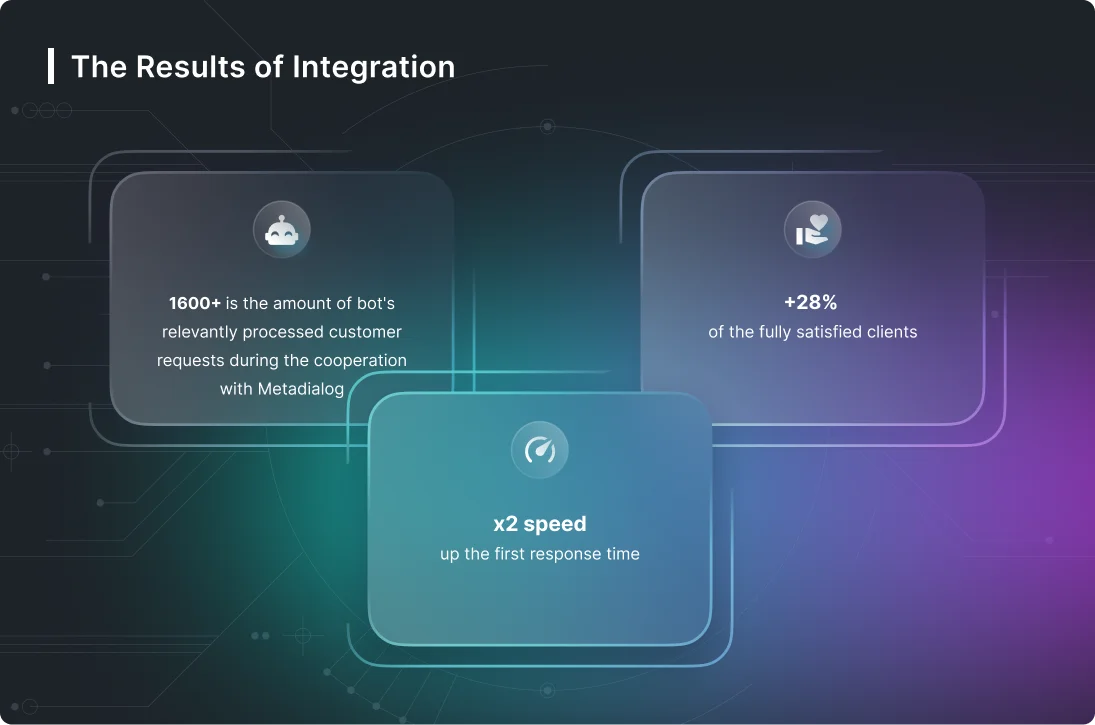What Is Machine Learning and Types of Machine Learning Updated
What Is Machine Learning ML? Definition, Types and Uses
Machine learning is an exciting branch of Artificial Intelligence, and it’s all around us. Machine learning brings out the power of data in new ways, such as Facebook suggesting articles in your feed. This amazing technology helps computer systems learn and improve from experience by developing computer programs that can automatically access data and perform tasks via predictions and detections. Elastic machine learning inherits the benefits of our scalable Elasticsearch platform.
- There will still need to be people to address more complex problems within the industries that are most likely to be affected by job demand shifts, such as customer service.
- Machine learning brings out the power of data in new ways, such as Facebook suggesting articles in your feed.
- Training machine learning algorithms often involves large amounts of good quality data to produce accurate results.
- The machine receives data as input and uses an algorithm to formulate answers.
Deep learning is about “accurately assigning credit across many such stages” of activation. Unsupervised learning is a type of machine learning where the algorithm learns to recognize patterns in data without being explicitly trained using labeled examples. The goal of unsupervised learning is to discover the underlying structure or distribution in the data. Explaining how a specific ML model works can be challenging when the model is complex. In some vertical industries, data scientists must use simple machine learning models because it’s important for the business to explain how every decision was made. That’s especially true in industries that have heavy compliance burdens, such as banking and insurance.
Machine learning techniques and algorithms
Enterprise machine learning gives businesses important insights into customer loyalty and behavior, as well as the competitive business environment. Image recognition analyzes images and identifies objects, faces, or other features within the images. It has a variety of applications beyond commonly used tools such as Google image search. For example, it can be used in agriculture to monitor crop health and identify pests or disease. Self-driving cars, medical imaging, surveillance systems, and augmented reality games all use image recognition.
Overall, machine learning has become an essential tool for many businesses and industries, as it enables them to make better use of data, improve their decision-making processes, and deliver more personalized experiences to their customers. Artificial neural networks (ANNs), or connectionist systems, are computing systems vaguely inspired by the biological neural networks that constitute animal brains. Such systems “learn” to perform tasks by considering examples, generally without being programmed with any task-specific rules. Classical, or “non-deep,” machine learning is more dependent on human intervention to learn. Human experts determine the set of features to understand the differences between data inputs, usually requiring more structured data to learn.
Machine learning (ML) is a type of artificial intelligence (AI) focused on building computer systems that learn from data. The broad range of techniques ML encompasses enables software applications to improve their performance over time. The original goal of the ANN approach was to solve problems in the same way that a human brain would. However, over time, attention moved to performing specific tasks, leading to deviations from biology. Artificial neural networks have been used on a variety of tasks, including computer vision, speech recognition, machine translation, social network filtering, playing board and video games and medical diagnosis. A core objective of a learner is to generalize from its experience.[6][43] Generalization in this context is the ability of a learning machine to perform accurately on new, unseen examples/tasks after having experienced a learning data set.
From that data, the algorithm discovers patterns that help solve clustering or association problems. This is particularly useful when subject matter experts are unsure of common properties within a data set. Common clustering algorithms are hierarchical, K-means, Gaussian mixture models and Dimensionality Reduction Methods such as PCA and t-SNE. If you’re studying what is Machine Learning, you should familiarize yourself with standard Machine Learning algorithms and processes. Since the data is known, the learning is, therefore, supervised, i.e., directed into successful execution.
How Dialog Axiata used Amazon SageMaker to scale ML models in production with AI Factory and reduced customer … – AWS Blog
How Dialog Axiata used Amazon SageMaker to scale ML models in production with AI Factory and reduced customer ….
Posted: Wed, 08 May 2024 18:21:22 GMT [source]
Acquiring new customers is more time consuming and costlier than keeping existing customers satisfied and loyal. Customer churn modeling helps organizations identify which customers are likely to stop engaging with a business—and why. Decision trees are tree-like structures that make decisions based on the input features. Each node in the tree represents a decision or a test on a particular feature, and the branches represent the outcomes of these decisions. The work here encompasses confusion matrix calculations, business key performance indicators, machine learning metrics, model quality measurements and determining whether the model can meet business goals.
Machine learning models are also used to power autonomous vehicles, drones, and robots, making them more intelligent and adaptable to changing environments. Machine learning algorithms are trained to find relationships and patterns in data. Feature learning is motivated by the fact that machine learning tasks such as classification often require input that is mathematically and computationally convenient to process. However, real-world data such as images, video, and sensory data has not yielded attempts to algorithmically define specific features.
How Do You Decide Which Machine Learning Algorithm to Use?
However, it does require you to carefully prepare the input data to ensure it is in the same format as the data that was used to train the model. This step verifies how effectively the model applies what it has learned to fresh, real-world data. Here, data scientists and machine learning engineers use different metrics, such as accuracy, precision, recall, and mean squared error, to help measure its performance across various tasks.
Most ML algorithms require annotated text, images, speech, audio or video data. But, with the right resources and the right amount of data, practitioners can leverage active learning. Machine learning involves feeding large amounts of data into computer algorithms so they can learn to identify patterns and relationships within that data set.
Navigating the Nexus: Challenges and Solutions for AI/ML to Leverage Distributed Storage – Innovation & Tech Today
Navigating the Nexus: Challenges and Solutions for AI/ML to Leverage Distributed Storage.
Posted: Wed, 08 May 2024 17:04:40 GMT [source]
It lets organizations flexibly price items based on factors including the level of interest of the target customer, demand at the time of purchase, and whether the customer has engaged with a marketing campaign. K-Nearest Neighbors (KNN) is a simple yet effective algorithm for classification and regression. It classifies a new data point based on the majority class of its k-nearest neighbours in the feature space. Support Vector Machines(SVM) is a powerful algorithm used for classification and regression tasks. It works by finding the hyperplane that best separates different classes in the feature space.
New input data is fed into the machine learning algorithm to test whether the algorithm works correctly. For starters, machine learning is a core sub-area of Artificial Intelligence (AI). ML applications learn from experience (or to be accurate, data) like humans do without direct programming. When exposed to new data, these applications learn, grow, change, and develop by themselves. In other words, machine learning involves computers finding insightful information without being told where to look. Instead, they do this by leveraging algorithms that learn from data in an iterative process.
Machine learning ethics is becoming a field of study and notably be integrated within machine learning engineering teams. Additionally, it can involve removing missing values, transforming time series data into a more compact format by applying aggregations, and scaling the data to make sure that all the features have similar ranges. Having a large amount of labeled training data is a requirement for deep neural networks, like large language models (LLMs).
A few years ago, Starbucks enhanced its mobile app by enabling ordering ahead via voice commands. The National Hockey League rolled out a chatbot for easier communication with fans. These applications of AI are examples of machines understanding human intents and returning relevant results. Neural networks are inspired by the structure and function of the human brain.
In practice today, we see AI in image classification for platforms like Pinterest, IBM’s Watson picking Jeopardy! Answers, Deep Blue beating a chess champion, and voice assistants like Siri responding to human language commands. To reference Artificial Intelligence is to allude to machines performing tasks that only seemed plausible with human thinking and logic.
Many of today’s leading companies, including Facebook, Google and Uber, make machine learning a central part of their operations. Semi-supervised anomaly detection techniques construct a model representing normal behavior from a given normal training data set and then test the likelihood of a test instance to be generated by the model. Most of the dimensionality reduction techniques can be considered as either feature elimination or extraction. One of the popular methods of dimensionality reduction is principal component analysis (PCA). PCA involves changing higher-dimensional data (e.g., 3D) to a smaller space (e.g., 2D). Reinforcement machine learning is a machine learning model that is similar to supervised learning, but the algorithm isn’t trained using sample data.
The accuracy and effectiveness of the machine learning model depend significantly on this data’s relevance and comprehensiveness. After collection, the data is organized into a format that makes it easier for algorithms to process and learn from it, such as a table in a CSV file, Apache Parquet, or Apache Arrow. Machine learning (ML) is a subset of artificial intelligence (AI) that transcends traditional programming boundaries.
In unsupervised learning, the training data is unknown and unlabeled – meaning that no one has looked at the data before. Without the aspect of known data, the input cannot be guided to the algorithm, which is where the unsupervised term originates from. This data is fed to the Machine Learning algorithm and is used to train the model. The trained model tries to search for a pattern and give the desired response. In this case, it is often like the algorithm is trying to break code like the Enigma machine but without the human mind directly involved but rather a machine.
You can foun additiona information about ai customer service and artificial intelligence and NLP. The right solution will enable organizations to centralize all data science work in a collaborative platform and accelerate the use and management of open source tools, frameworks, and infrastructure. This level of business agility requires a solid machine learning strategy and a great deal of data about how different customers’ willingness to pay for a good or service changes across a variety of situations. Although dynamic pricing models can be complex, companies such as airlines and ride-share services have successfully implemented dynamic price optimization strategies to maximize revenue.
What Is Machine Learning?
Explore the free O’Reilly ebook to learn how to get started with Presto, the open source SQL engine for data analytics.
Monitoring and updatingAfter the model has been deployed, you need to monitor its performance and update it periodically as new data becomes available or as the problem you are trying to solve evolves over time. This may mean retraining the model with new data, adjusting its parameters, or picking a different ML algorithm altogether. Feature selectionSome approaches require that you select the features that will be used by the model.
The benefits of predictive maintenance extend to inventory control and management. Avoiding unplanned equipment downtime by implementing predictive maintenance helps organizations more accurately predict the need for spare parts and repairs—significantly reducing capital and operating expenses. For example, typical finance departments are routinely burdened by repeating a variance analysis process—a comparison between what is actual and what was forecast. It’s a low-cognitive application that can benefit greatly from machine learning. As the data available to businesses grows and algorithms become more sophisticated, personalization capabilities will increase, moving businesses closer to the ideal customer segment of one.
Machine learning is rapidly becoming indispensable across various industries, but the technology isn’t without its limitations. Understanding the pros and cons of machine learning can help you decide whether to implement ML within your organization. Fueled by the massive amount of research by companies, universities and governments around the globe, machine learning is a rapidly moving target.
Signals travel from the first layer (the input layer) to the last layer (the output layer), possibly after traversing the layers multiple times. Similarity learning is an area of supervised machine learning closely related to regression and classification, but the goal is to learn from examples using a similarity function that measures how similar or related two objects are. It has applications in ranking, recommendation systems, visual identity tracking, face verification, and speaker verification. Experiment at scale to deploy optimized learning models within IBM Watson Studio. Deep Learning also often appears in the context of facial recognition software, a more comprehensible example for those of us without a research background.
Customer spotlight
Active Learning, therefore, can significantly reduce the amount of data required to develop a performant AI system because it only learns from the most relevant data. All the terms are interconnected, but each refers to a specific component of creating AI. With the right understanding of what each of these phrases entails, you can get your AI more efficiently from Pilot to Production. Support vector machines work to find a hyperplane that best separates data points of one class from those of another class. Support vectors refer to the few observations that identify the location of the separating hyperplane, which is defined by three points. Here’s how some organizations are currently using ML to uncover patterns hidden in their data, generating insights that drive innovation and improve decision-making.
Some methods used in supervised learning include neural networks, naïve bayes, linear regression, logistic regression, random forest, and support vector machine (SVM). Deep learning is a specific application of the advanced functions provided by machine learning algorithms. “Deep” machine learning models can use your labeled https://chat.openai.com/ datasets, also known as supervised learning, to inform its algorithm, but it doesn’t necessarily require labeled data. Deep learning can ingest unstructured data in its raw form (such as text or images), and it can automatically determine the set of features which distinguish different categories of data from one another.
Convolutional Neural Networks
Recommendation engines, for example, are used by e-commerce, social media and news organizations to suggest content based on a customer’s past behavior. Machine learning algorithms and machine vision are a critical component of self-driving cars, helping them navigate the roads safely. In healthcare, machine learning is used to diagnose and suggest treatment plans. Other common ML use cases include fraud detection, spam filtering, malware threat detection, predictive maintenance and business process automation.
Breakthroughs in AI and ML seem to happen daily, rendering accepted practices obsolete almost as soon as they’re accepted. One thing that can be said with certainty about the future of machine learning is that it will continue to play a central role in the 21st century, transforming how work gets done and the way we live. Since there isn’t significant legislation to regulate AI practices, what is ml? there is no real enforcement mechanism to ensure that ethical AI is practiced. The current incentives for companies to be ethical are the negative repercussions of an unethical AI system on the bottom line. To fill the gap, ethical frameworks have emerged as part of a collaboration between ethicists and researchers to govern the construction and distribution of AI models within society.
Most often, training ML algorithms on more data will provide more accurate answers than training on less data. Using statistical methods, algorithms are trained to determine classifications or make predictions, and to uncover key insights in data mining projects. These insights can subsequently improve your decision-making to boost key growth metrics.
Once the model has been trained well, it will identify that the data is an apple and give the desired response. Deep Learning is a more advanced form of Machine Learning, which is used to create Artificial Intelligence. Active Learning leverages readily available, and often imperfect, AI to actively select new data that it believes would be most beneficial when developing the next, improved version of the AI.
Note that there’s no single correct approach to this step, nor is there one right answer that will be generated. This means that you can train using multiple algorithms in parallel, and then choose the best result for your scenario. Decision tree learning uses a decision tree as a predictive model to go from observations about an item (represented in the branches) to conclusions about the item’s target value (represented in the leaves). It is one of the predictive modeling approaches used in statistics, data mining, and machine learning.
The goal is to find patterns and relationships in the data that humans may not have yet identified, such as detecting anomalies in logs, traces, and metrics to spot system issues and security threats. The first step in ML is understanding which data is needed to solve the problem and collecting it. Data specialists may collect this data from company databases for customer information, online sources for text or images, and physical devices like sensors for temperature readings. IT specialists may assist, especially in extracting data from databases or integrating sensor data.
ML is already being used in a wide variety of industries, and its adoption is only going to grow in the future. These are just a few examples of the many ways that ML is being used to make our lives easier, safer, and more enjoyable. As ML continues to develop, we can expect to see even more innovative and transformative applications in the years to come. Convenient cloud services with low latency around the world proven by the largest online businesses.
Tree models where the target variable can take a discrete set of values are called classification trees; in these tree structures, leaves represent class labels, and branches represent conjunctions of features that lead to those class labels. Decision trees where the target variable can take continuous values (typically real numbers) are called regression Chat PG trees. In decision analysis, a decision tree can be used to visually and explicitly represent decisions and decision making. In data mining, a decision tree describes data, but the resulting classification tree can be an input for decision-making. Machine learning supports a variety of use cases beyond retail, financial services, and ecommerce.
Developers also can make decisions about whether their algorithms will be supervised or unsupervised. It’s possible for a developer to make decisions and set up a model early on in a project, then allow the model to learn without much further developer involvement. When we interact with banks, shop online, or use social media, machine learning algorithms come into play to make our experience efficient, smooth, and secure. Machine learning and the technology around it are developing rapidly, and we’re just beginning to scratch the surface of its capabilities. Machine learning also performs manual tasks that are beyond our ability to execute at scale — for example, processing the huge quantities of data generated today by digital devices. Machine learning’s ability to extract patterns and insights from vast data sets has become a competitive differentiator in fields ranging from finance and retail to healthcare and scientific discovery.
A machine learning algorithm is a set of rules or processes used by an AI system to conduct tasks—most often to discover new data insights and patterns, or to predict output values from a given set of input variables. If you’re looking at the choices based on sheer popularity, then Python gets the nod, thanks to the many libraries available as well as the widespread support. Python is ideal for data analysis and data mining and supports many algorithms (for classification, clustering, regression, and dimensionality reduction), and machine learning models. Traditionally, data analysis was trial and error-based, an approach that became increasingly impractical thanks to the rise of large, heterogeneous data sets. Machine learning can produce accurate results and analysis by developing fast and efficient algorithms and data-driven models for real-time data processing.
In common ANN implementations, the signal at a connection between artificial neurons is a real number, and the output of each artificial neuron is computed by some non-linear function of the sum of its inputs. Artificial neurons and edges typically have a weight that adjusts as learning proceeds. The weight increases or decreases the strength of the signal at a connection. Artificial neurons may have a threshold such that the signal is only sent if the aggregate signal crosses that threshold. Different layers may perform different kinds of transformations on their inputs.
AI encompasses the broader concept of machines carrying out tasks in smart ways, while ML refers to systems that improve over time by learning from data. Machine Learning is a branch of artificial intelligence that develops algorithms by learning the hidden patterns of the datasets used it to make predictions on new similar type data, without being explicitly programmed for each task. However, there are many caveats to these beliefs functions when compared to Bayesian approaches in order to incorporate ignorance and Uncertainty quantification.




